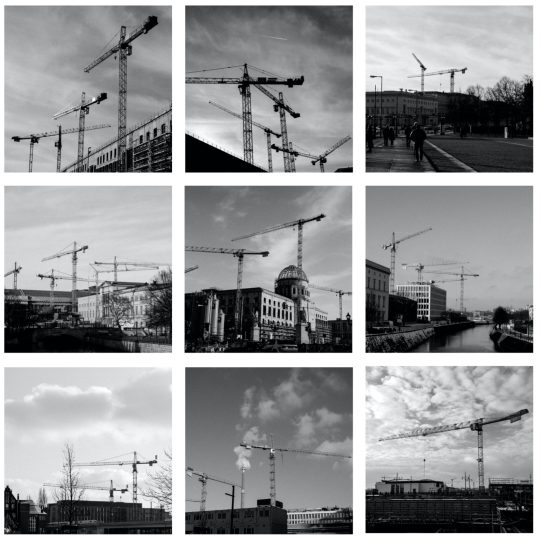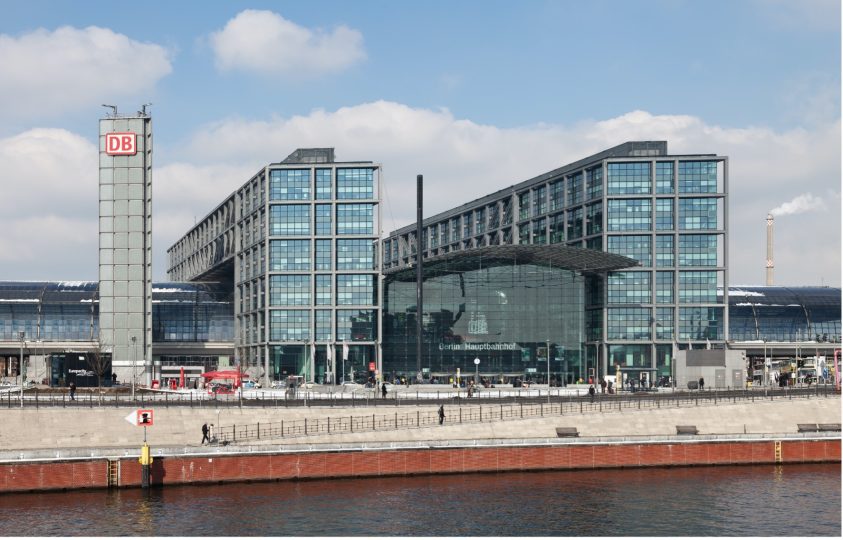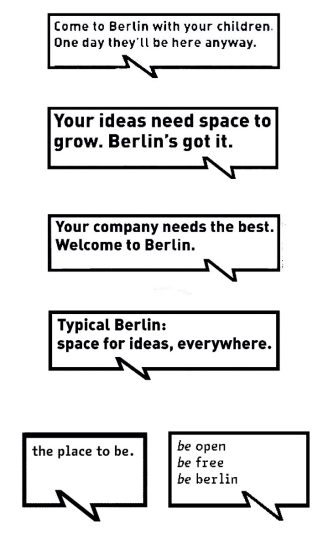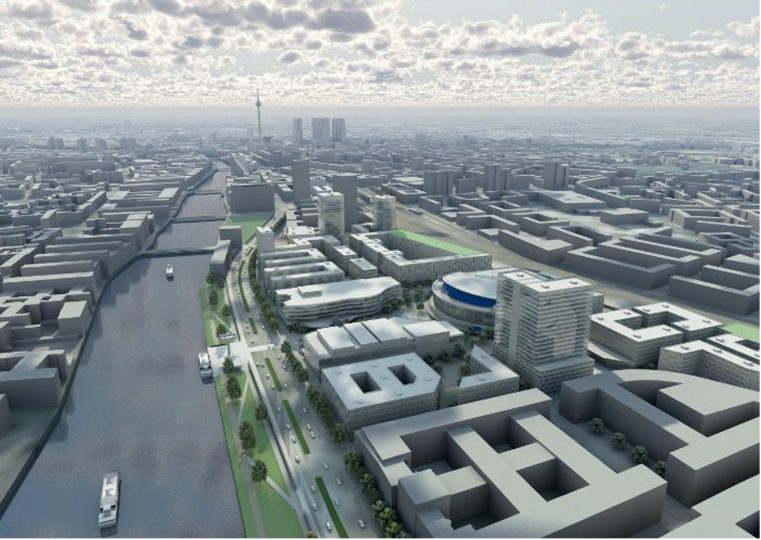Towards a new city?
Urban strategies and design models in post-wall Berlin
Throughout its troubled history, Berlin had been faced several structural changes and could be considered a city always in the making. This article wants to analyse current urban strategies in Berlin, especially focusing on the so-called Berlin Strategy 2030. Through a review of the urban projects involved in the different strategies, the article aims to present the urban models used to design and built the new Berlin and to critical discuss if and how those models will be related to the political, economical and social characters of the urban fabric.
Date
2017
Authors
Category
Paper
Tags
#UrbanGeography
Journal
CHENGSHI SHEJI
Publisher
Tsinghua University
Volume
12
ISSN
2096-1235
1. Introduction
In 1910, the art critic Karl Scheffler in his book Berlin: Ein Stadtschicksal (Berlin: the destiny of a city) wrote: «Berlin ist eine Stadt, verdammt dazu, ewig zu werden, niemals zu sein» (Berlin is forever condemned to becoming and never being). Berlin has a very troubled history, made of continuous destruction and reconstruction in which political and economical dynamics are strictly related to, and reflected in, physical changes. From the Thirty Years War in the XVII century, to the so called Year Zero, after the WWII, that leave the city to rubble, Berlin has always had to face with a rebirth in its image and in its physical aspects. One can be seen Berlin as an example of a multilayered city. However, different layers and processes of change seem to be more a sort of juxtaposition of various urban imaginaries where both tabula rasa and blueprints urban models overlap. Every layer and every imaginaries represent its changing of an political or economic assets, and it is for this reason that this paper wants to collect the most relevant policies made in the city linked with the urban transformations from the fall of the Wall till today.
A very particular and important period to catch these tensions is the beginning of the 90s when the revolutionary movement in the German Democratic Republic (GDR) and the prospect of a united Germany have a far-reaching impact on urban development (Schmoll, XXXX). In the first decade after the fall of the Wall, Berlin has undergone a radical transformation and an extraordinary building boom because of his need for resurgence from the dust of divided Germany.
During the time, the reference to different urban models is used to define, construct and reconstruct the urban image and to change the urban fabric to give again and again a new face for the new capital. Indeed, the renovation of Western cities has given rise to the circulation of urban models that have become established values understood as desirable and achievable. Many architects involved in the reconstruction of Berlin were convinced that their works had relevance beyond Berlin: according to Molnar (2010), the city «offered a laboratory for testing possible scenarios for the future of the European city at large in the age of globalization» (p. 288). In that period Berlin was in the spotlight cause it had the change to imagine how could it be a modern European capital, while the others were lived in their historical legacy.
Mainly focusing on physical changes related to urban strategies, the article wants to present and critically discuss the urban design models through which the “new Berlin” is designed and built. We first briefly reviewed the main urban strategies carried on after the reunification and the main projects through which they were built. After that, we focused on the more recent urban strategy, called Berlin Strategy 2030, in order to discuss the very idea of city that emerges from that, as a manifesto of what the city wants to become and how it can achieve it. As a good example of policy mobility and policy transfer (Gonzalez, 2001), Berlin urban strategies, in which the creation of urban images has become a central concern and architecture increasingly acts as a symbol of the “new”, outline the spread of few urban models, based on few keywords (competitiveness, sustainability, creativity, smartness), the consequences of such a diffusion on urban changes and the flow of architectural blueprints to rebuild Berlin.
At the end we would like to call into question this international attitude of design city through models, discuss pro and cons, the benefit and the disadvantage that the cities undergo through this way of making it.
2. Berlin after the Wall: main urban strategies
2.1. A symbolic re-start: Berlin capital city and the search for the “European city”
After the fall of the Wall and the reunification process, the first wave of urban strategies is related to the controversial decision, taken by the Bundestag (the German Parliament) on the 20 June 1991, to move the capital from Bonn (capital of the West Germany from 1949 to 1990) to Berlin. During this troubled period, urban policies are mainly devoted to build Berlin once again as the capital of the unified Germany, both physically and symbolically. Main urban projects concerned new developmental ensembles along the path of the Wall and the restoration of structures and buildings still damaged by the World War II bombings.
A real “building fever” took place and generated the greatest volume of building activity in Europe: «with its 440 inner-city construction sites, the city called itself ‘Europe’s largest building site’» (Molnar, 2010, p. 282). However, urban strategies call also for a new role of Berlin in the international arena. As put forward by Molnar (2010), in the early 90s, «popular catchwords (…) described Berlin as the ‘center of Central Europe’, the ‘gateway to the East’, the ‘hub between East and West’ and the ‘European metropolis’. Moreover, Berlin was not only predicted to catch up with global cities of Europe such as London or Paris within a matter of a few years, it was to embody the model of the future metropolis» (pp. 281-282).
The plan for the new Capital city, designed by Hans Stimmann (city building director between 1991 to 2006 and a follower of the “careful city renewal” movement) aimed to re-established the urban fabric according to the model of the “European city” and to a (contested) “Berlin tradition”. Horizontal skyline, squares, green spaces and others public spaces are organised in a compact and coherent grid «to build back the nineteenth-century city, weaving together the fragments of the old, and causing a great deal of destruction (this time of the modernist city)» (Molnar, 2010, p. 299). The aim of Stimmann was to act on the scale of the block, introducing technical tools of planning (as the street section and the residential typology) to stimulate the re-born of locality using the roles of the so-called “Critical Reconstruction” «a strategy formulated in the early 1980s by J.P. Kleihues for the new housing project for the International Building Exhibition (IBA). […] it was an attempt to claim the Berlin typology of block and streets with its Mietshaus and courtyards as the archetype for all the new constructions in the city» (Sauerbruch, 1997, p. 284).
Architectural and planning competitions for the urban reconstruction, mainly based on the “European city model”, were launched to manage the projects of PostdamerPlaz, Friedrichstrasse and Alexanderplaz. However, this model was critically questioned by the Dutch architect Rem Koolhaas (1991) who, after leaving the jury competition for the redesign of the Potsdamer Platz area in 1991 in protest, writes against the dogma of the traditional “European city”, probably never existed. In addition, this model was also defied by the role of global economic investors who, according to the global city mantra, play the game of urban competition. Daimler-Benz, Simens, Coca Cola, Allianz, Deutsche Bahn AG were just some of the 39 corporations that announced to move their headquarters in Berlin during the mid 90s (Krätke, 2000). In Postdamerplaz, probably the most representative project of this tension, from one side Stimmann requires an urban vision linked to the regular grid of the nineteenth century Berlin (Boquet, 2007); from the other side, Sony, Daimler Benz Messerschmidt and AAB Group build their headquarters following the international business districts model. Skyscrapers and shopping centers stand out in the heart of Berlin, as well as along the Friedrichstrasse, renamed as the «Fifth Avenue of Berlin» (Marcuse, 1998, p. 331).
2.2 To be global: Berlin as service metropolis
Meanwhile the deindustrialization of the city was going fast and between 1990 and 1996 200.000 people lost their job in the industrial field; in Berlin the urban industrial period was actually finished as in all other European cities.
To boost the economy, the city had to lean on another kind of economic model. The vision of Berlin as an upcoming global city had become part of the urban government’s programme of innovation and technology development. Mainly focusing on the economic dimensions of the global city approach, this urban strategy wants to enhance Berlin’s reputation in the framework of global competition through the conversion of Berlin’s economy to a service metropolis. This economical model is based on the financial support of all the industries working on the production of services, without really deal with the loss of jobs that followed the unification process and the established financial and economic centrality of other German cities (in primis, Frankfurt am Main and Munich). As put forward by Krätke (2004), «Berlin is not the only economic centre in Germany and the position of a metropolis should empirically be related to its economic capacities in a regionally comparative perspective. In comparison to the others regional economic centre in Germany, Berlin has quite a weak position in terms of entrepreneurial control capacity» (p. 59).
However, Berlin made some moves to reach the status of global city. Economic restructuring process and the desire to be global is base on “new island of economic growth” (Krätke, 2004), mainly related to transport infrastructures, financial and knowledge-intensive activities. Indeed, in those years the Senate of Berlin financed the construction of the biggest transportation hub in Europe. The Hauptbhanhof station, which starts in the 1995 and inaugurates in the 2006, is called by Berliners the “traffic cathedral”. However, it also represents the symbol of the supposed new central role of Berlin in the European context.
PostdamerPlaz is another example of this global urban strategy aims to achieve the service metropolis status. This high rise district, hosting the headquarters of some multinational enterprises, stands out in Berlin’s cityscape as a group of skyscrapers clustered in the middle of the city defined the place of the new economic power (Marcuse, 1998). Finally, Adlershof is the hub designed to follow the wake of the service metropolis model, particularly in knowledge-intensive and innovation-driven fields like the software industry, biotechnology and medical engineering. In this “science and technology park”, 1013 companies and 16 research institute were located (www.adlershof.de).
Aside from the symbolic character of these project, as well as their functionality, to reach the goal and become a real service metropolis in action, Berlin and its region needed more physical space: more offices, more buildings, more places to build up. As put forward by the city government, to promote the service metropolis Berlin need 11 million square meters of office space by 2010. Accordingly, «a wave of real estate acquisition, conversion, and large-scale building projects covered eastern German cities and regions in particular, since the German State introduced a special subsidy regulation for real estate investments in eastern Germany that contained a very favourable tax write-off scheme» (Krätke, 2004, p. 61). These subsidies were mainly used to facilitate real estate investments in the eastern part of Berlin. However,«in the course of the real estate boom, Berlin built up the largest volume of unoccupied office spaces in absolute figures, with more than 1.5 million square meters in 1998. This figure decreased slightly in the following years, however, today [2004] there is still more than 1.2 million square meters of unoccupied office spaces in the city» (ibidem, p.62). In the late 90s, the building booms turned into a market crash; the real estate crisis turned into a financial crisis. In 2001, Berlin went into debt with a peak of 65 million marks. In those years someone call the crisis a bankrupt of the city cause there was many cuts on public expenditure, especially on the education, on the sanity system and on the social housing institutions. This crisis went on for all the first decade of the 2000.
2.3 Be creative, Be Berlin!
In the early 00s the city coffers were empty to arrange any economical strategy to rise the city from the crisis. Now that the attempts to launch Berlin as a service metropolis or a global city were failed, the city needed again another model to lean on.
Klaus Wowereit, the former major of the city, decided to focus the new urban strategy on culture, with a special regard to Berlin subculture. According to the famous (and contested) model of the “creative city” (Florida, 2003), the new urban strategy is «operated on the assumption that international, tolerant, rapidly changing cities are likely to fare in the global competition to attract creative industries» (Lanz, 2013, p. 1312).
First investments went to mass events. The Partner fur Berlin GmbH, the city’s official public–private partner in charge of urban marketing and branding, starts to foster several cultural events, as the Love Parade, the Culture Carneval, the Christopher Street Day and so on. Then, the cultural turn is at the heart of the urban campaign Be Berlin!, launched by the municipal government in March 2008 to promote global competitivity attracting creative industries, in particular in music, films, radio and television production; new media; publishing, design and advertising agencies. Indeed, «the media industry is a prime move for globalisation processes in the urban systems, where media industry clusters act as local nodes in the global networks of large media groups. Global media firms have set up locational networks that extend around the globe and have “local” anchoring points in different regions and nations» (Krätke, 2004, p. 60). This new kind of strategy did not bring instant money to the city coffers, but it raised the international interest of foreign investors. More than 7,000 companies in multi-media creativity localise in Berlin and in 2004 the city earns the title of global media city. The «new government agenda began to assert itself that re-imagined the city as an international metropolis and — as illustrated by the Mediaspree project – banked on the economic potential of the creative milieus that had made post-reunification Berlin as a globally renewed of subculture» (Lanz, 2013, p. 1312).
In 2002 the Senate of Berlin approved the masterplan of the biggest project of urban transformation ever made in Berlin, Mediaspree. The project, located in the former industrial area in the banks of the river Spree around the neighbourhoods of Kreuzberg, Friedrichshain and Treptow, wants to create a media hub, through the complete renewal and the location of hotels, luxury residences, mall, offices and headquarters of the big firm involved (Universal Music, MTv, Mercedes-Benz). As written by Lanz (2013), Mediaspree project is «180 hectares of inner-city real estate destined for transformation into a dense creative-industry cluster with global appeal» (p. 1310). The project was in a form of public-private partnership because the city coffers were still in a difficult situation, so the private help made the project possible but on the other side made private interest more relevant than the public need. Indeed, Mediaspree iter-project have had many troubles with the closest urban community that struggle to have more space for the city than for the private companies allocated there.
With the Mediaspree project and the strengthening of the Adlershof cluster, Berlin upgrades its role: from the attraction to the producer of service and cultural goods. Thanks to this, the city emerged from the crisis. Between the 2005 and the 2012 the average growth rate was of 2,5%, meanwhile in the rest of the Germany was at 1,5%; between 2006 and 2013 were created more than 200 thousand new jobs, so the unemployment percentage decrease from 17% to 9,9% (Krätke, 2000). The model of creative city was paying off and in the 2014 Berlin was named World Media City.
As in other projects of Post-Wall Berlin, in Mediaspree the architectures must be the iconic signs of the new urban development. From the long series of high-rise buildings located on the bank of the Spree to those of Potsdamer Platz, from Alexander Platz until the “traffic cathedral” of Hauptbanhof, office and residential buildings, shopping malls, museum, arcades, hotels mark the urban space as symbols of a new economic power and as attractions for tourists and investors. The new architecture «produces office spaces, cells piled up into shapes that do not vary much: some cubic form, if possible a tower, the grid is still the basic element of construction, even if these forms can now be twisted and turned and rounded or skewed or all of these at the same time. The outside forms are made into something interesting and spectacular (…) What we get there is architecture for entertainment» (Steinert, 2009, p. 286).
3. Back to the future: Berlin strategy 2030
In 2013, the Senate of Berlin published a prospect to set the guideline for the further transformations of Berlin to be achieved in 2030. The Berlin Strategy 2030 outlines some key-words as strategy fixed points, “the status report provided an in-depth analysis informed by a number of ideas, strategic plans and future policies designed to build a foundation for the strategic development of Berlin” (Berlin Strategy 2030, p.6).
To develop the concept of the strategy was created a public consultation platform called City Forum 2030; more than 2500 citizen were involved to express their opinions on the future of the city. Tools as workshop, local public discussion, school project and the so-called “Berlin telegram” (as Twitter and Facebook post, emails and letters) were used to involved the community. All the contributions were analyzed and discussed by Senate Administrations, local authorities and specialists to draws up the actual Strategy.
The program sets out the key words of the future development, means the concepts in which every further project will be based; seven strategies that show where the city is focus on; finally ten transformation areas characterised by a main project or by smaller urban adjustments.
The key words by which the city transformations should move by are: the concept of smartness and creativeness, to maintain its dynamic and cosmopolitan character and still be creative and cultural attractive for people and private investors; being green, self-sufficient, autonomous in energy with the help of new technologies and finally achieving the final goal to be a zero environmental impact city by 2050; the “legendary Berlin mix” (Berlin Strategy 2030, p.8), that aspect that made Berlin a tolerant and multicultural metropolis, should keep going working on the neighbourhoods scale, the community and on the social life of the inhabitants.
With these key words, the actual strategy is based on seven main focuses on which invest. Those strategy promote a sustainable development for the city till 2030, from the quality of life to the competitive potentials, “the strategies provide concrete development goals, identity appropriate fields of action for collaborative work and set out a clear vision of what Berlin will have achieved by 2030” (Berlin Strategy 2030, p. 24). Here the seven strategies:
- smart knowledge economy: promoting start-ups and relationships between research institutes and economic activities, supporting the technology hubs;
- creativity: improving and increasing places of cultural production, maintaining and developing venues and premises for creative, cultural artists and businesses, supporting the spatial diversification of tourist demand and organising mass cultural events;
- education: providing high quality educational infrastructure, improve kindergartens and primary school, increasing educational standard and guaranteeing a good job after technical educational institutes;
- neighbourhoods diversity: supporting the social city through the increasing of public and living spaces and safeguarding the local activity, as shops and services;
- green: connecting the free and green spaces, rethinking the further infrastructural development as underground and have a careful development of the urban environment;
- climate: directing energy efficient housing stock renewal and new buildings, increasing the usage of renewable energies, attracting urban technologies as the “clean tech” companies;
- accessibility and mobility: making public transport more active, increasing bicycle and pedestrian path and promoting new sustainable way of mobility, as the electric vehicles.
The last part of the document sets out the areas of transformations following the lines traced by the concept of the key words and the strategies of action. Ten new poles of urban transformations emerged from the prospect. Every selected area is marked by a new project or by an urban plan strategy. The poles are sprawl all over the city, from the periphery to the city centre to emphasise and maintain the multi centre character of Berlin. Those projects are made to be keystones for the further development of that area, to trigger the engine for an urban renewal or a new urbanization area. In the document, those are called “stimulus”, exactly to stimulate the further changing of that part of city, “the transformations areas offer development potential relevant to the whole city in terms of both social issues and open spaces” (Berlin Strategy 2030, p.58).
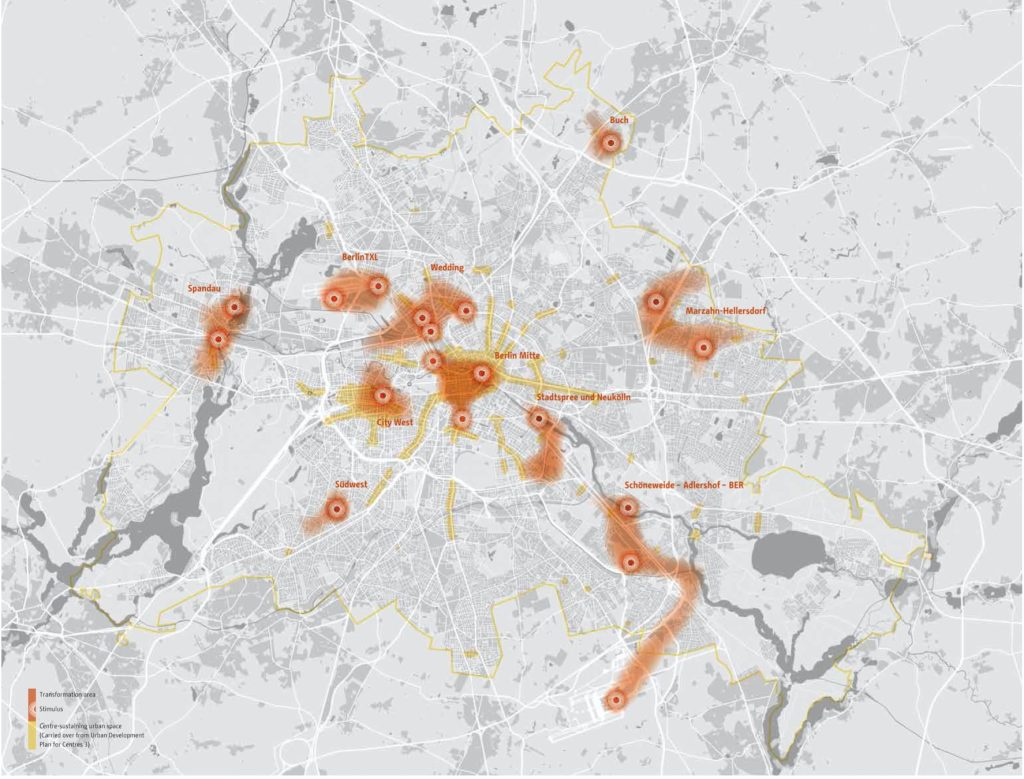
Fig. 5 – “Stimulus” Berlin Strategy 2030
The ten poles of transformations are: in Mitte, the city centre with the project of the Humboldt Forum, the new cultural centre; the City West, strengthening its role of global window of the city; Stedtspree and Neukölln with the intention of enlarge the Mediaspree project; Wedding with its the new residential and commercial area of Europacity; Berlin Tegel, the new home town for enterprises, firm and start-up; the old town of Spandau; Adlershof and its technological hub; the Südwest, improving the Freie University facilities and promoting a business incubator; Marzahn-Hellersdorf, working on the big green area surrounding Berlin; and finally Buch, with the intention of making the next popular and attractive place to live.
Most significant and relevant of those projects are: the Europacity, a whole new neighbour near the central station of Hauptbhanhof, the Humboltd Forum, a cultural centre in the innercity, the prosecution of the Mediaspree masterplan and the conversion of the Tegel airport in a new research centre for the start-up, as a new scientific and technologic hub (and so the construction of a new airport).
Behind the big central station of Hauptbhanhof, a huge space between the river was left empty; there the Berlin Strategy 2030 plan provides for a new neighbour included of residential, services and offices, called Europacity.
The area will host 1200 residential units, in buildings that look at the charges of heights laid down by Stimmann in the early 90s, an art campus, a touristic port, restaurants, shops, offices, a large quantity of public spaces and an “inviting riverside promenade” (ASTOC Studio, 2008). Near the station will born a new high rise district, where will be located the offices; then will be build three new bridges that will connect the banks; the commercial buildings will rise on the two side of the railroad to softer the noise pollution in the residential area.
This project will be the first impression of all of those tourist that will arrive from Hauptbhanhof station, for this reason the project will acquire a particular meaning: it will be what the city would looks like, its own mirror. Therefore, will be a city that cares about the green (because of the several public spaces and parks), the culture (the art campus), the economy (the office buildings) and about the tourists (thanks to the path on the waterfront, and the touristic port); so will be a city that reflects all of those global standards to be named as an interesting, attracting, contemporary, inviting city. “The urban quarter will, in future, be Berlin’s first impression for million of visitors. It is therefore an important ‘visiting cards’ for the capital” (www.german-architects.com).

Fig. 6 – Europacity masterplan
The second project included in the Berlin Strategy is about the intervention on an historical building as a new cultural centre. The building, located in the Museum Island in the city centre, was the City Palace during the Prussian Empire, and after the Second World War, even if it reported very little damages, was destroyed to becoming the socialist Palast der Republik, the parliament building of the East Germany and the civic and cultural centre of the capital. In the 2006, after some disputes about it, the building was destroyed again to give born to the new Humboldt Forum. The project will recover its original shape of the Prussian building and will host a museum, a library and some of the university departments, it will embody the cultural centre of the inner city area. Here what we find is a will to maintain the tension of the historical centre, in the shape of the “old” and the facilities of the “new”
Looking at the success and at the good working of Adlershof scientific cluster, the Senate of Berlin decided to propose another technological hub in the city, this time to invest on a sort of start-up incubator. In Berlin, the start-up business model already gave some good achievements, as SoundCloud and Reserch Gate, both born in Berlin in the 2008; this kind of model could give the possibility to young association to create their own company.
The new hub will be located in the site of the actual airport, Tegel, in fact the whole project includes first the construction of a new airport, bigger than the actual one that will serve all the Brandenburg region and will compete with the Frankfurt Am Main one to manage the international air traffic; than Tegel will be converted as the site of the hub. The cluster will be called Urban Tech Republic and so will be the new research pole “will be a centre of excellence for urban technologies, including automotive engineering, life sciences, energy (technology) and information and communications technologies” (Berlin Strategy 2030, 2015).
Because of its position the project will be the driving force for a new urbanization of the surrounding area, to direct consciously the expansion of the city. The whole area has a size of 460 hectare and will be included of a new residential centre, will be the site for more than 800 companies, university department and research institute; will be create 15.000 new jobs and 5.000 students will attend the university in its inside “a functioning network of universities, research facilities and manufacturing businesses is developing solutions for a smart city” (ibidem.).
The development route marked out by the Berlin Strategy 2030 highlights a changing strategy in economy, urban policies and urban development. For its positive economic situation, Berlin is now in race to enter in the global network of the attractive city, and to reflect a specific model it changed its physical form.
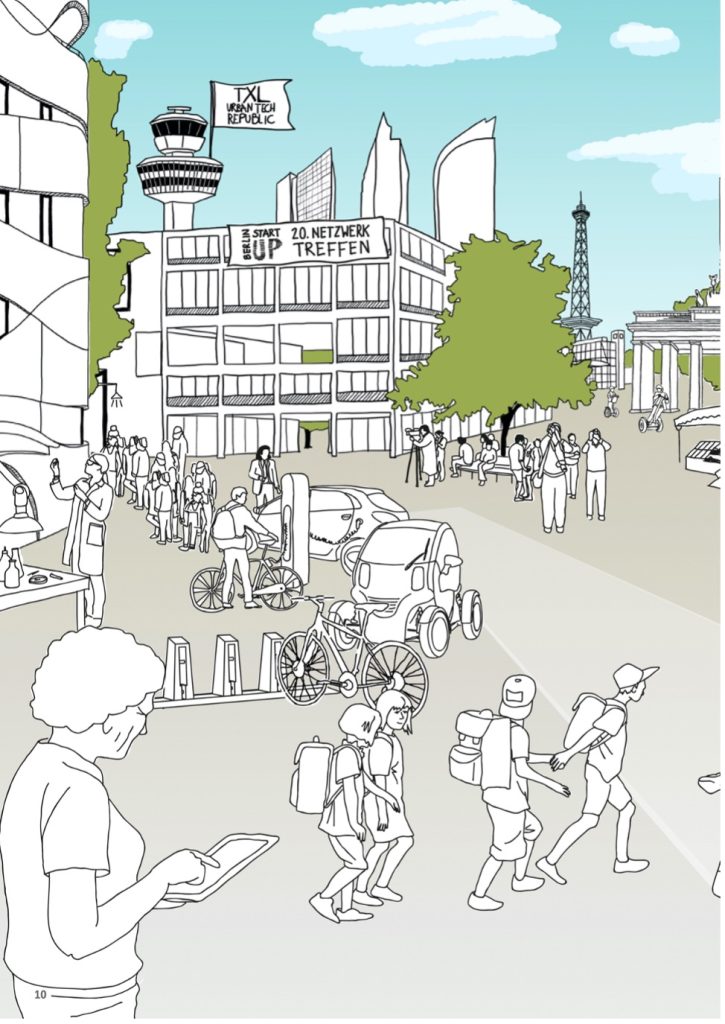
Fig. 7 – TXL Urban Tech Republic sketch
4. Urban design by models?
From the “European city” to the creative one, from the myth to be a global city to the new green and sustainable city, post-wall Berlin urban strategies are based on some disembedded urban models. The global economic policies force cities to get physically uniformed to each other to respond to the market, tourism, investors needs that want what they expect to see, the spaces that they expect to walk and the experiences they expect to undertake. However, could a city be designed to reflect an economical model? Are economic models able to get merged in the urban complexity or they remain just an economic expression? Finally, are urban transformations model able to face with the ever changing dynamics of a specific urban fabric?
In the last decades, urban innovations and changes have become packaged as models that can be detached and exported in different places. Specifically, the mix of state entrepreneurialism on the one hand, and the development of sustainable infrastructure on the other, has generated a range of urban innovation recipes that promote “successful” urban conditions and lifestyles. Replicable urban models have come to stand as invoked, envied, and exemplary new urbanities. Urban models are used worldwide to solve urban problems – for example, public housing, downtown development, clean industries, upscale districts, cultural and tourist attractions – and to transform urban places in world-class cities, creative cities, smart cities and so on.
This global attitude is called policies transfer, and the practices used by “are concerned with the process by which knowledge about policies, administrative arrangements, institutions and ideas in one political system (past or present) is used in the development of policies, administrative arrangements, institutions and ideas in another political system” (Dolowitz and Marsh, 2000, p. 5). This kind of policies trade represents a real economic market in which States, and in particular cities, buy and sell way to administrate the city. Following the “good practice” or learning from the “successful model” remove political responsibility by local government to the contextual and specific administration of territory. The illusion to have a “best practice” applicable in any urban contest that could work with any economical and social system is dramatically flatting cities. Every city is a smart city, every city is creative, green, sustainable, and so every city will have those projects to make those images possible. This import-export of policies is directly linked in urban contest, that became the main stage of application, “some cities acquire a paradigmatic or celebrity status as they seem to sum up an era, the place where it all come together” (Thrift, 1997, p. 142, cit. Gonzàles, 2011, p.2). And so the Bilbao touristic demand brought the renovation policy of the so-called McGuggenheization, means to help the touristic economy of a city using the museum-cum-starchitect model; or the need of re-use the industrial port that, for the first time in Baltimore in the ‘80s, introduced the waterfront model; or again the green policies that made explode the practices of urban gardening.
As a condensed set of desirable and achievable urban forms, these models have been raised in the imagination of planners and developers, and materialized in built forms in Berlin (as in other western cities). On the one hand, they set a symbolic watermark of urban aspirations; on the other, they provide achievable blueprints for urban renovations. Urban models are not only a technology for building global cities and knowledge hubs elsewhere; they can become a political tool for changing the built form and the social spirit of urban environment. Urban modelling is thus deployed as a tool for remaking the urban environment and reshaping sociality, as well as for making a few of generic keywords – sustainable, liveable, creative, global, smart – the new criteria to design and build cities.
Even if this way of making cities is already getting global, cities are made by a complexity that can not be solved replacing the “best practice” from context to context. The breach of the policies transfer system is in the non-specificity of it; it describes the best way to solve a problem, but not in its own context. How the city react to the model application is, in a way, how it try to maintain its complexity, this is why it “has not, it is important to emphasize, been a prelude to homogenization” (Peck, 20011, p. 9).
Come back to Berlin, reviewing its history through models and replaceable policies, it can be seen how the city has reacted to them, sometime rejected them, as the attempt to made Berlin a global city, sometime absorbing them, as the creative city policies. Taking Berlin as a theoretical case, it can be assumed that we, as planner, researcher, or simply inhabitants should consider city as “a complex and incomplete system” (Sassen, 2016), an open system in which questions and answers can not be absolute and static. In this way, Scheffler’s definition of Berlin, a city forever condemned to becoming and never being (1910), could be a paradigmatic approach on the study and on the administration of cities.
References
-
Berlin strategy 2030, Urban development concept, 2015, Senate Department for Urban Development and Envirorment
Dolowitz D.P. and Marsh D., 2000, Learning from Abroad: the Role of Policy Transfer in ContemporaryPolicy-Making, Gover- nance: An International Journal of Policy and Admainistra- tion, vol. 13, pp. 5-24
Florida R., 2003, Cities and Creative Class, City & Community, vol. 2(1), pp. 3-19
Gonzàles S., 2011, Bilbao and Barcelona ‘in Motion’. How urban regeneration ‘Models’ travel and Mutate in the Global Flows of Policy Tourism, Urban Studies, vol. 48(7), pp. 1397-418
Gonzàles S., 2011, Bilbao and Barcelona ‘in Motion’. How urban regeneration ‘Models’ travel and Mutate in the Global Flows of Policy Tourism, Urban Studies, vol. 48(7), pp. 1397-418
Krätke S., 2000, Berlin: The Metropolis as a Production Space, European Planning Studies, vol. 8(1), pp. 7-27
Krätke S., 2004, Economic Restructuring and the Making of a Financial Crisis – Berlin’s Socio-Economic Development Path 1989 to 2004, disP – The planning Review, vol. 40 (156), pp. 58-63
Lanz S., 2013, Be Berlin! Governing the City through Freedom, International Journal of Urban and Regional Research, vol. 37(4), pp. 1305-24
Marcuse P., 1998, Reflection on Berlin: The Meaning of Construc- tion and the Construction of Meaning, Joint Editors and Blackwell Publishers Debates, pp. 331-8
Molnar V., 2010, The Cultural Production of Locality: Reclaming the ‘European City’ in post-Wall Berlin, International Journal of Urban and Regional Research, vol. 34(2), pp.281-309
Peck J., 2011, Geographies of Policy: from Transfer-Diffusion toMobility-Mutation, Progress in Human Geography, vol. 35(6), pp.773-97
Sassen S., 2016, Urban Age Shaping Cities: Global capital and urban land, La Biennale di Venezia conference
Sauerbruch M., 1997, Berlin 2000: a missed opportunity, The Journal of Architecture, vol. 2(3), pp. 283-9
Scheffler K., 1910, Berlin: Ein Stadtschicksal, Suhrkamp, 2015, Berlin
Schmoll, XXXX
Image credits:
Fig. 1 – © Chiara Iacovone, 2016
Fig. 2 – www.wikiwand.com
Fig. 3 – www.beberlin.de
Fig. 4 – www.morgenpost.de
Fig. 5 – Berlin strategy 2030, Urban development concept, 2015, Senate Department for Urban Development and Envirorment
Fig. 6 – www.german-archiect.com
Fig. 7 – Berlin strategy 2030, Urban development concept, 2015, Senate Department for Urban Development and Envirorment
